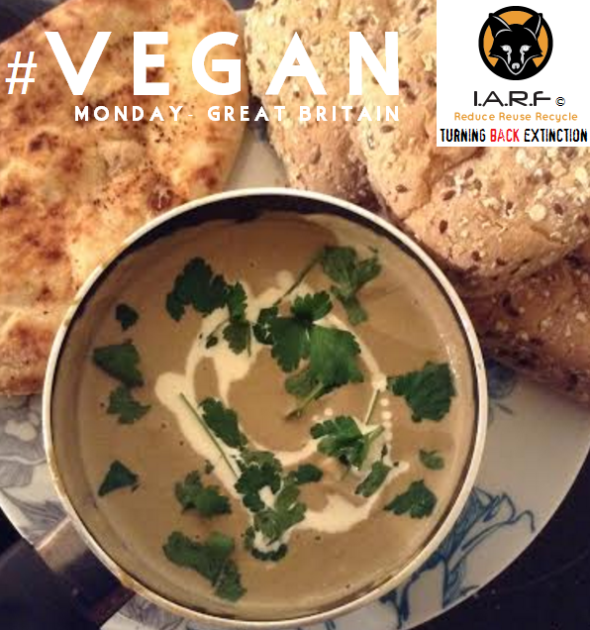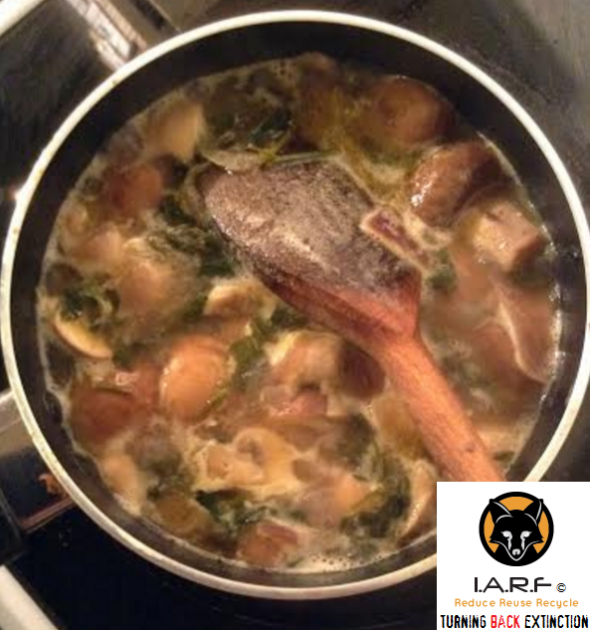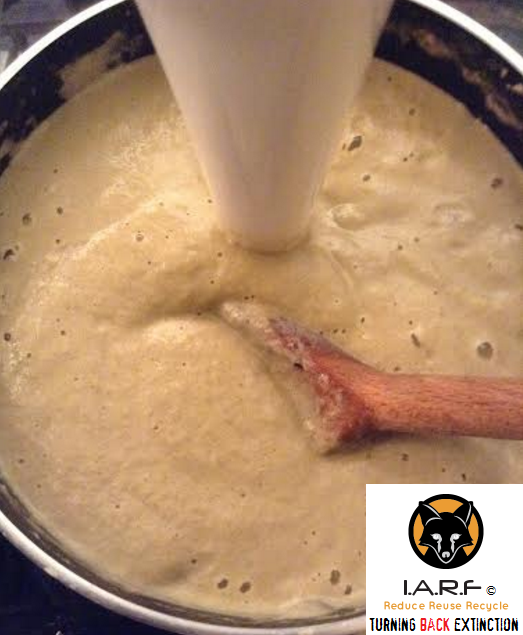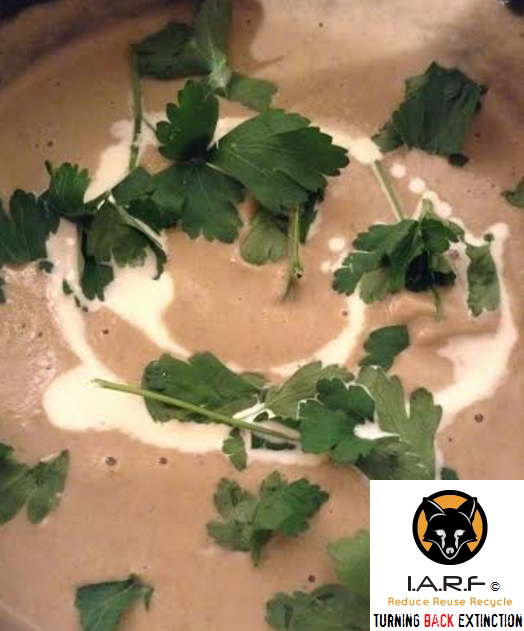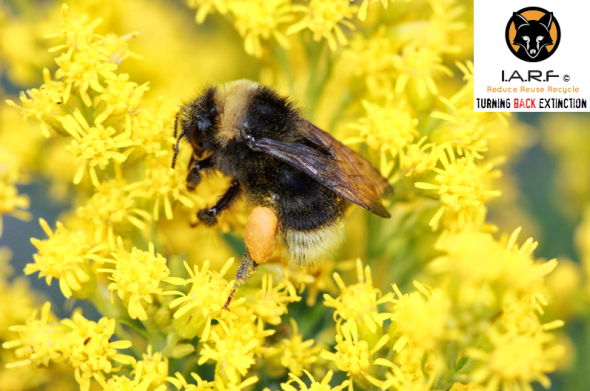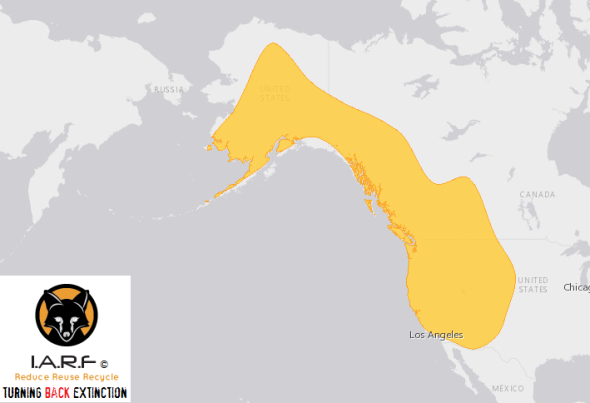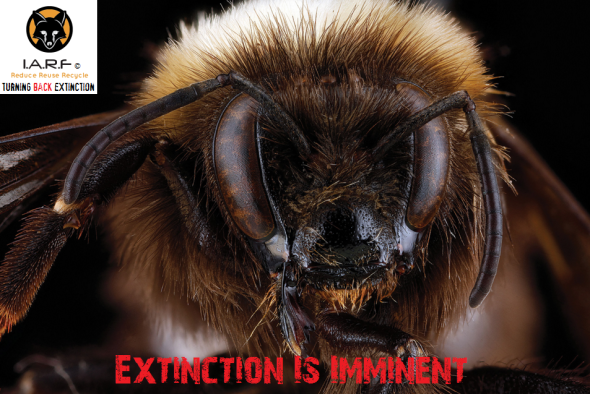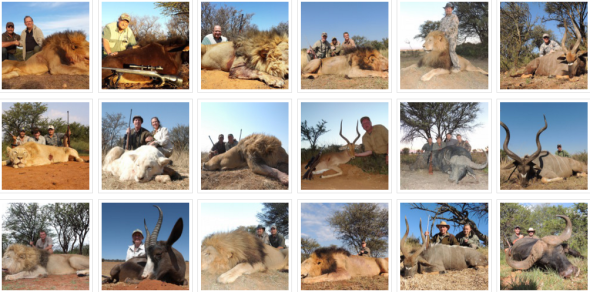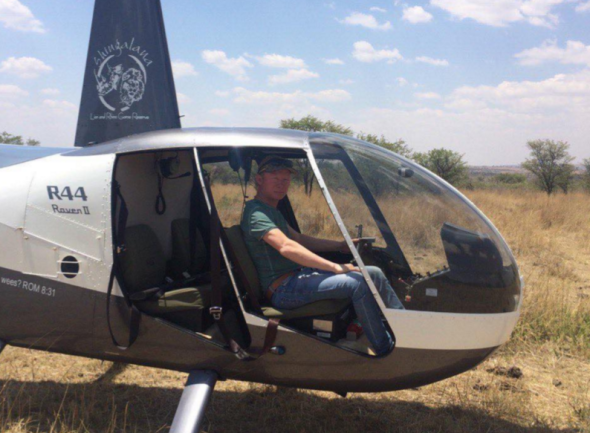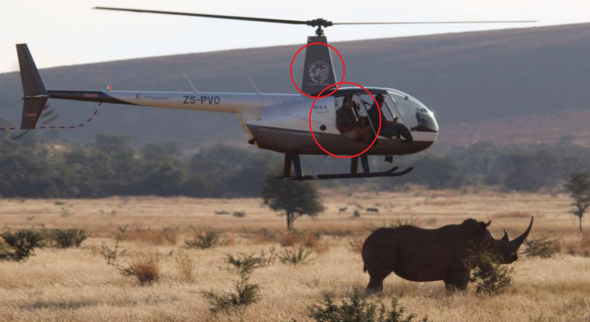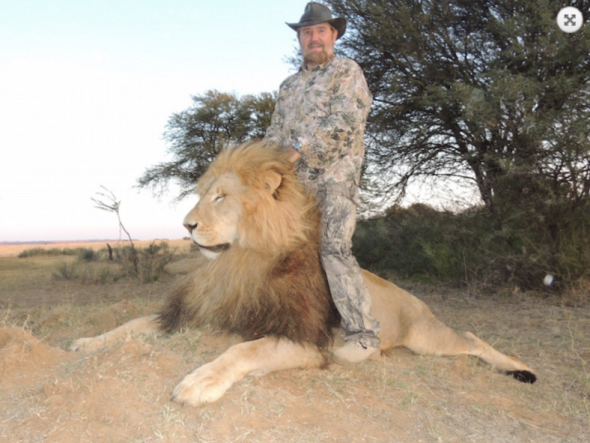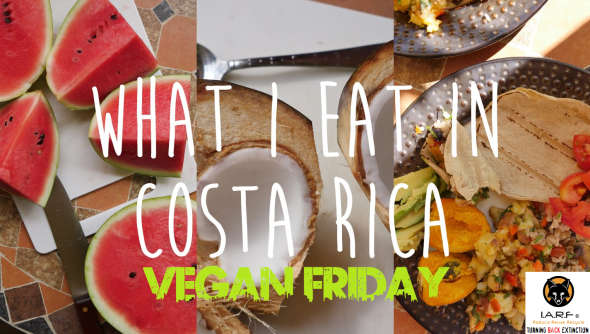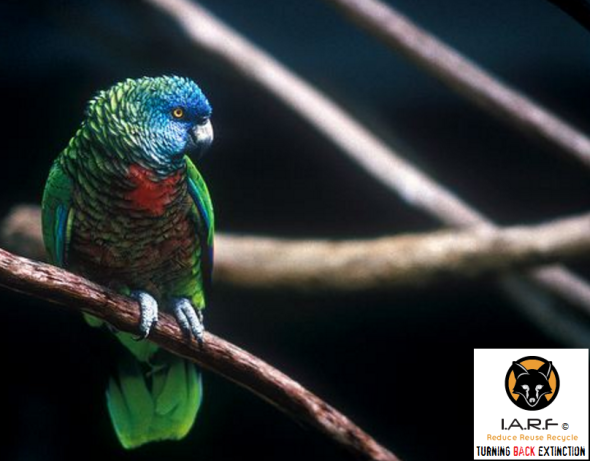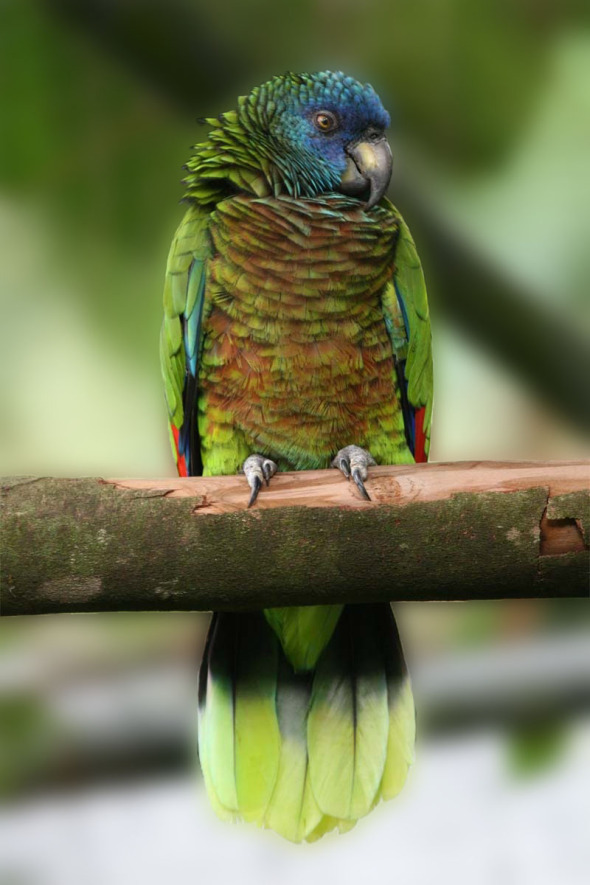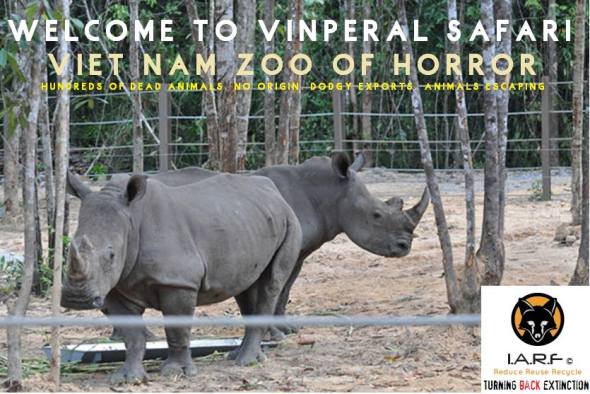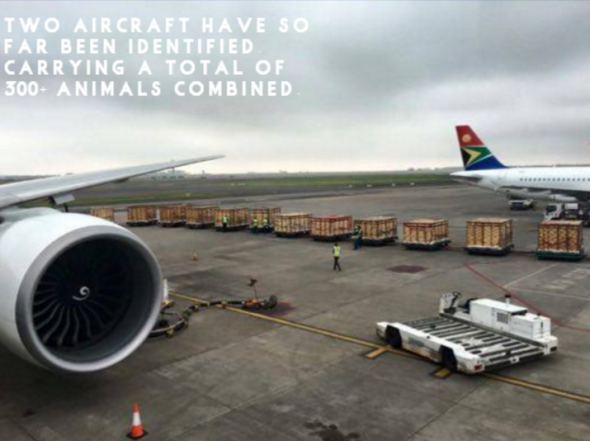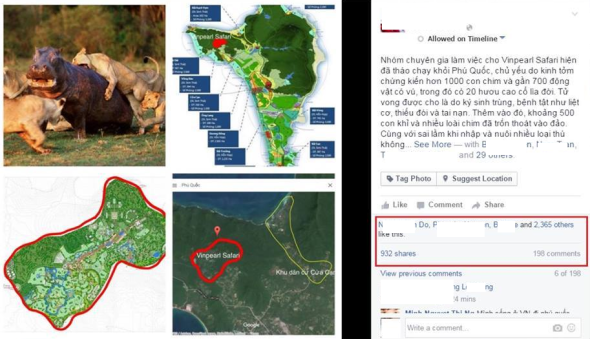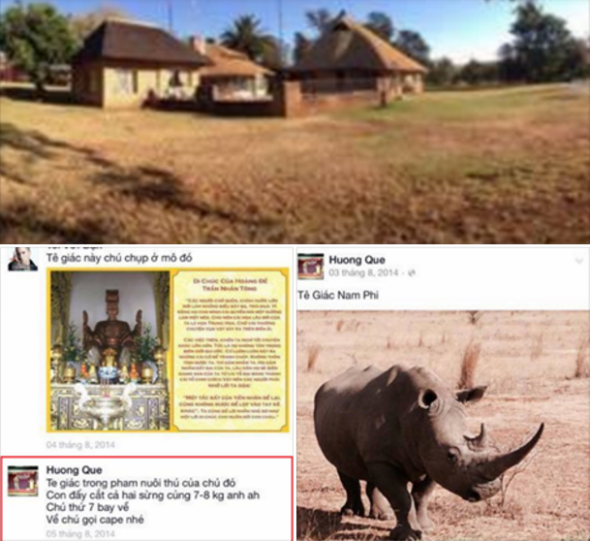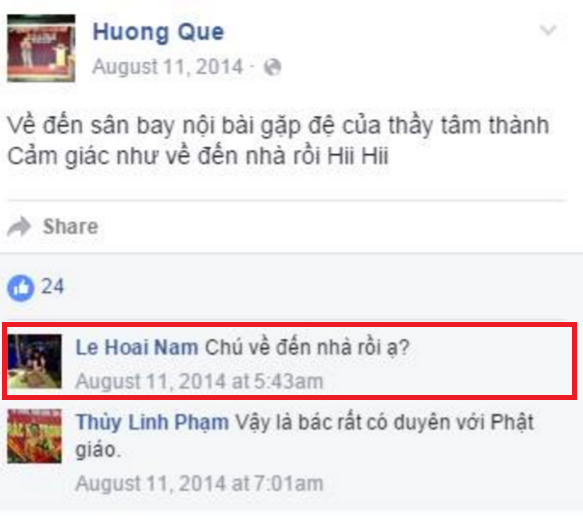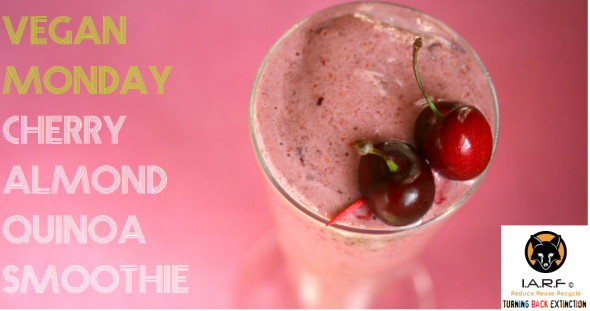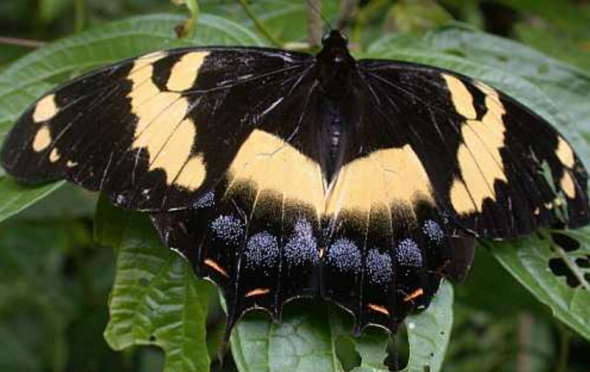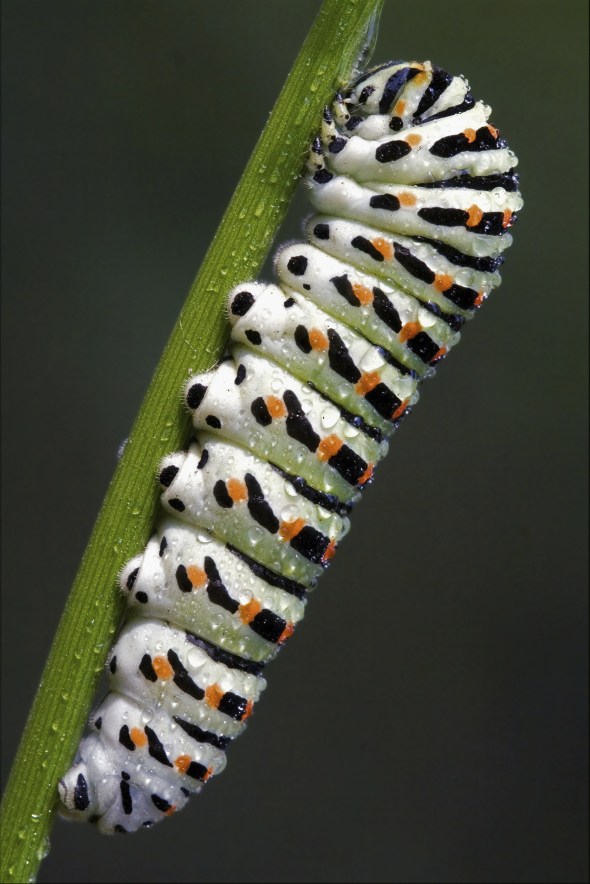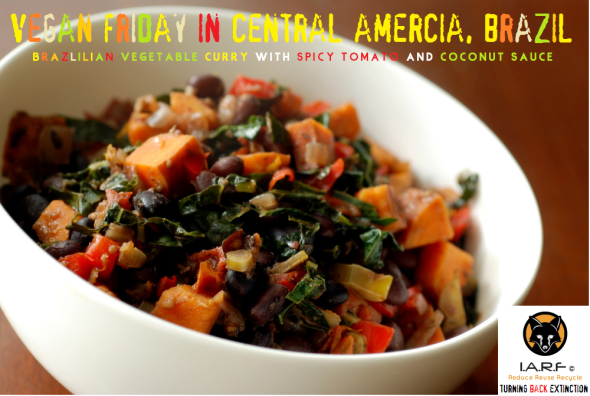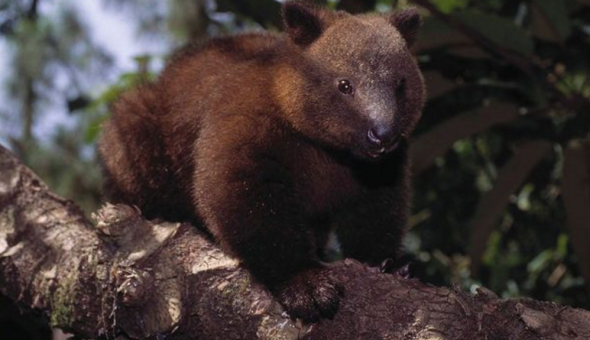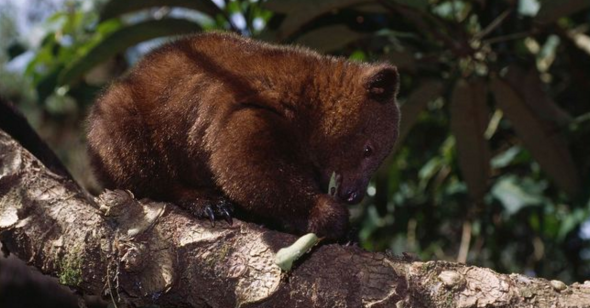VEGAN MONDAY: TONI DEVINE’S PEPPERY MUSHROOM SOUP (BELFAST)
VEGAN PEPPERY MUSHROOM SOUP (UK)
As we are now nearing the end of our South American vegan and vegetarian journey, we’ve decided to take a wee detour back to Northern Ireland (aka Belfast) for a little warmer, and wow this was one amazingly nice, warm, and actually rather filling dish. This recipe is from Mme Toni Devine whom supervised my first prepping and cooking of a dish that frankly I haven’t even made before. So what the hell, I was at the mercy of a rather calm (yet stern chef) ;O)
I’ve always purchased vegan or veggie soups from the supermarket, but today I tried a little something different, and to be honest this was the very best soup I have tried, and made, and yes I ate the lot, from the very pan I cooked it in, why not?
INGREDIENTS
One half of a red onion
1/3 of a lemon
1 punnet of button mushrooms
1 punnet of chestnut mushrooms
1 clove of garlic (I used 2)
Cup of roughly chopped parsley
Coconut cream
1 tablespoon of olive oil (optional)
1-2 small tea spoons of pepper
1 tablespoon of cayenne pepper (optional)
1 vegetable stock cube (you can make your own veggie stock)
1 large knob of vegan butter
1 1/2 large cups of boiled water
INSTRUCTIONS
Chop the half of a red onion and your parsley. Take the nob of vegan butter and add that to a hot pot. Gently cook the onions and the parsley for approximately 4-5 minutes on a gentle heat. Next, take your button, chestnut mushrooms, and crushed garlic, add them to the pan with the onions and parsley. Brown gently, until the mushrooms are cooked. Take your pepper and cayenne pepper and add to the cooking pot. (I used cayenne pepper due to my own culture, and because I wanted the soup to be slightly more spicier).
While the ingredients are cooking on a low heat, boil enough water to fill the pot 3/4 of the way. Take your vegetable stock cube and add that to a cup or jug. Once the water is boiled add enough hot water to break the veggie stock cube up. Then add the remainder. Once the stock is completely dissolved and your pot of mushrooms, parsley, onions Etc is now browned add the hot veggie stock water to the pot. Add one tablespoon of olive oil (if required).
Bring the pot to the boil, then reduce the heat to a very gentle simmer. Take your 1/3 lemon and squeeze into the pot, stirring the pot of ingredients every ten minutes. Then half way through the cooking add the coconut cream and stir well. DO NOT add the lemon after adding the cream as this may split the cream.
Image: Leave the pot to simmer gently for 30 minutes.
Once your 30 minutes is up, take your blender and blend all of the ingredients within the pan, until the pan is a fine soup like consistency as seen in the image (top screen), or below.
Image: Blend the mix into a fine soup until no lumps are seen.
Your soup is now ready to serve. Take some cold or warmed crusty bread buns, or as I used Peshawar Naan Bread (and crusty rolls). Eat from the pan as I did, or serve into a nice warm bowl, and enjoy with boiled veggies, or on its own. This really was a stunning yet simple soup to make, and not a single piece of goodness is lost. What goes into the pan stays in the pan, and doesn’t like some homemade soups end up going down the sink. Who needs supermarket soup when you have this?
Image: Serve with a wee bit of coconut cream and rough chopped parsley.
Once ready to serve, take a wee bit of coconut cream, some roughly chopped parsley, and eat hot. That’s as simple as its going to get, and it really was amazing. Mme Devine’s cooking is actually quite amazing, and no, I’m not saying that because were in a relationship. I would recommend this style of cooking to anyone, and its 100% homemade how it should be. Nothing is lost in the making, its cheap to buy, and its packed with goodness, and nutritious. I love cooking, and so does Mme Devine. Stay tuned for more delights…..
Recipe: Mme Toni Devine, Northern Ireland (Vegetarian).
Dr Jose C. Depre
Endangered Species Monday: Bombus occidentalis |Extinction is Imminent.
Endangered Species Monday: Bombus occidentalis
“1/3 bites of food we eat comes from a plant that was pollinated by a bee”
What are we humans doing to Planet Earth?, We are destroying so many pollinating animals, that soon they’ll be none left. When or if that day occurs, when there are no more pollinators, we ourselves will be fighting to stay alive, can you imagine that? Human extinction is slowly in the making… …No matter how many vegans or vegetarians there are, we all require plants. No plants = No life!
That’s a Scientific Fact of Life!
Dr Jose Depre
This Monday’s Endangered Species Post (E.S.P) I document on the Western Bumble Bee. Scientifically identified as Bombus occidentalis this particular species of bee is listed as (vulnerable), and is now nearing complete extinction within the wild, despite conservation efforts aimed at reducing dangers, things certainly are not looking good for the bee, or crops the species pollinates either. Image credits: Rich Hatfield
The species was identified back in 1858 by Dr Edward Lee Greene, Ph.D, (August 10, 1843 – November 10, 1915) was an American botanist known for his numerous publications including the two-part Landmarks of Botanical History and the naming or redescribing of over 4,400 species of plants in the American West.
Endemic to: Canada (Alberta, British Columbia, Northwest Territories, Saskatchewan, Yukon); United States (Alaska, Arizona, California, Colorado, Idaho, Montana, Nebraska, Nevada, New Mexico, Oregon, South Dakota, Utah, Washington, and Wyoming). To date we still don’t know what the “exact current rate of decline is”, or even if the Western Bumble Bee is going to be with us within the next decade. Its ‘likely that based on current surveys the species will be extinct within the next 10 years (max)”.
Since 2008-2014 there has been quite a significant rate of decline st 11%-12%, sparking concerns that the Western Bumble Bee ‘may eventually be listed as critically endangered’ within the United States and Canada. Scientists confirmed that in one area which is [unknown], possibly the United States via field surveys the species was not found during the years of 2003-2007 (which is of course quite concerning), especially when the species is a major pollinator, and has been seen only in very low numbers at (one to seven per year) each year from 2008 to 2014.
A study conducted focusing on ‘range decline’ relating to some eight separate species native to the United States, showed that the Western Bumble Bee species alone had decreased in population size within its (range), by some 28% (EST) between the years of 2007-2008. A further study conducted by conservation scientists concluded that by 2007-2009 surveys detected the species only throughout the Intermountain West and Rocky Mountains; it was largely absent from the western portion of its range.
Further declines have been reported within the [US] states’ of Oregon and Washington, however populations seem to be somewhat stable within (northeastern Oregon). Populations are also to a degree stable within Alaska and the Yukon. Average decline for this species was calculated by averaging the change in abundance, persistence, and EOO.
- Current range size is estimated to be at some 77.96%
- Persistence in current range relative to historic occupancy: 72.56%
- Current relative abundance relative to historic values: 28.51%
- Average decline: 40.32%
From viewing all data records I can confirm that the (exact rate of decline) within the species range, and its persistence total some 20%, with a 70% rate of decline in ‘abundance’. Surveys have also proven the this decades rate of decline is bar far lower than the last decades, which again raises some rather large concerns about a near future extinction occurring.
Image: Western Bumble Bees’ extant zones.
In the past, B. occidentalis was commercially reared for pollination of greenhouse tomatoes and other crops in North America. Commercial rearing of this species began in 1992, with two origins. Some colonies were produced in rearing facilities in California by a company which imported the technology for rearing bumble bees and applied it to rearing B. occidentalis locally in California.
This same year, a distributor for a competitor which did not have rearing facilities in North America at the time was granted permits by the US Department of Agriculture – Animal and Plant Health Inspection Service (USDA-APHIS) for a three year window of time (1992-1994) to export queens of B. occidentalis and B. impatiens to European rearing facilities for colony production.
Following rearing, these colonies were then shipped back to the U.S. for commercial pollination. In 1997, commercial producers began experiencing problems with disease (Nosema) in the production of B. occidentalis. Eventually, the availability of B. occidentalis became critically low, and western crop producers who had become dependent on pollination provided by this species began requesting that APHIS allow the shipment and use of B. impatiens in western states.
In 1998, the USDA-APHIS issued permits to allow B. impatiens to be used in the western U.S. However, within a few years, the USDA-APHIS stopped regulating the interstate movement of bumble bees altogether, citing their lack of regulatory authority. Bombus occidentalis is no longer bred and sold commercially and B. impatiens is used widely in the western U.S. One has to wonder though that since the the US Government stopped granting permits for Bombus occidentalis mostly due to species decline, primarily due to human ignorance, will the same rate of decline now be seen with the species B. impatiens?
Currently to date the only ‘known conservation actions that are under way is that of management, research and surveys’, meanwhile its likely that come the next decade we’ll have lost the species due to a lack of improving/increasing populations, and habitat while failing to decrease disease and virus.
THREATS
Populations of this declining species have been associated with higher levels of the microsporidian Nosema bombi and reduced genetic diversity relative to populations of co-occurring stable species. The major decline of the subgenus Bombus was first documented in B. occidentalis, as Nosema nearly wiped out commercial hives, leading to the cessation of commercial production of this species. Wild populations crashed simultaneously and the closely related B. franklini has been pushed to the brink of extinction.
However, Koch and Strange (2012) found high levels of infestation by Nosema in interior Alaska where this bumble bee was still quite common. In addition to disease, this species is faced with numerous other stressors including habitat loss and alteration due to agricultural intensification, urban development, conifer encroachment (resulting from fire suppression), grazing, logging and climate change.
Modifications to bumble bee habitat from over grazing by livestock can be particularly harmful to bumble bees by removing floral resources, especially during the mid-summer period when flowers may already be scarce. In addition, livestock may trample nesting and overwintering sites, or disrupt rodent populations, which can indirectly harm bumble bees. Indirect effects of logging (such as increased siltation in runoff) and recreation (such as off-road vehicle use) also have the potential to alter meadow ecosystems and disrupt B. occidentalis habitat.
Additional habitat alterations, such as conifer encroachment resulting from fire suppression, fire, agricultural intensification, urban development, and climate change may also threaten B. occidentalis. Insecticides, which are designed to kill insects directly, and herbicides, which can remove floral resources, both pose serious threats to bumble bees. Of particular concern are neonicotinoids, a class of systemic insecticides whose toxins are extraordinarily persistent, are expressed in the nectar and pollen of plants (and therefore are actively collected by bumble bees), and exert both lethal and sublethal effects on bumble bees.
Since B. occidentalis has recently undergone a dramatic decline in range and relative abundance, reduced genetic diversity and other genetic factors make this species especially vulnerable to extinction, and may lead to increased pathogen susceptibility. Recent research indicates that populations of B. occidentalis have lower genetic diversity compared to populations of co-occurring stable species.
It is therefore regrettable, that despite research, management and surveys - extinction is imminent, when though, we simply don’t know, however when it does happen, it means that yet another pollinator that we humans and animals depend on will be gone for good.
Image: Female B. occidentalis
Humans will never learn or understand just how critically important our wildlife is, until its gone. They’ll then be fighting over themselves, fighting to stay alive. By that time, human extinction will already be in the process.
Dr Jose C. Depre
Chief Environmental & Botanical Officer.
Follow me on Twitter here: https://twitter.com/josedepre11
VINPEARL LAUNCHES SMEAR CAMPAIGN | NAUGHTY.
WHERE DID YOU PURCHASE YOUR ANIMALS FROM AGAIN?
The Vinpearl Group fronted by Viet Nam’s most richest man has recently launched a very humorous smear campaign, AGAINST I.A.R.F. Now we don’t normally play smear, or even dirty, but if we’re going to play smear lets pull the big clangers out of the hat here.
WHO FROM THE VINPEARL GROUP PURCHASED HUNTING ANIMALS?
We recently ran a trace on where Vinpearl recently purchased some 330+ animals from in South Africa. No, it wasn’t from Harrods, although that wouldn’t surprise us to be honest. The so called ‘professional group’ fronted by some rather illiterate journalists seems to be forgetting that whilst their BIG BOSS MAN may have money, we have experience and some 8.9 million supporters to share share that experience with. Opps.
SHINGALANA LION & RHINO GAME RESERVE
Who in their right mind purchases animals from hunters, knowing that the money given to them hunters will purchase more animals to kill? BACK in DECEMBER 2015 - The Vinpearl Group purchased lions, tigers, kudu, monkeys, and zebra from SHINGALANA LION & RHINO GAME RESERVE, now did the Vinpearl Group inform their ‘paid journalists to look that one up’? Moreover why are paid ‘Vinpearl journalists supporting killers that support others killers’?
Image: Thanh Chu readying animals for Vinpearl transportation.
Now what does Thanh Chu (pictured above) and Ben Tran (pictured below), have in common with the hunting lodge that supplied countless diseased animals to the Vinpearl Group? Lets take a look.
Image: Ben Tran overseeing the shipment of animals from South Africa to Vinpearl.
Ben Tran and Mme Chị Van Anh Le (both of which are NOW hiding their data online quicker than you can say boo to a ghost), were the two main players that done dealings with the ‘hunting lodge above’. Not very professional is it? And before Ben Tran or even his sidekick denies knowing one another, or even the hunter they purchased animals off with the help of Viet Nam’s most richest man, think again!
Image: Van Thanh Chu who works for Frikkie Jacobs
Now who is Frikkie Jacobs dare we ask? Unfortunately for the Vinpearl Group, Frikkie Jacobs is one of many sadistic and quite narcissistic hunters that the so called ‘Viet Nam’s prominent richest man purchased animals from. The money that went into the sales of them animals, will now go into killing more animals as can be seen in the image above (top screen). Not very gentleman like now is it? Sigh.
Image: SHINGALANA LION & RHINO GAME RESERVE
Viet Nam’s richest man funds hunters.
Now okay. Viet Nam’s most richest man probably didn’t directly place money into the pockets of hunters and demanded they hunted more animals. What Mr Pham Nhat Vuong did do though is provide money to Mr Tran, Mme Chị Van Anh Le, and Mr Chu Dang Khoa to purchase animals from SHINGALANA LION & RHINO GAME RESERVE. That money has sadly gone directly into the pockets of hunters, that will breed more animals, hunt more animals and continue to cycle of trophy hunting.
Now be quick. All you Vinpearl paid journalists may want to check our claims up, they’re fast vanishing, and its likely that more and more data will vanish offline.
Thankfully we hold reams and reams of fast soon to be vanishing data.
When you try and smear us with nonsense, be careful, because we’d already have looked you up, spat you out, and moved on.
Have a nice day.
Anti Vinpearl Journalist.
VEGAN FRIDAY | COSTA RICAN STUFFED TORTILLA
VEGAN COSTA RICAN STUFFED TORTILLA
Staying on track with our month long South American vegan and vegetarian Monday’s and Friday’s, we bring to you a beautiful Costa Rican Stuffed Vegan Tortilla. Every week we host a vegan Monday and Friday day for anyone to try. While we understand that most vegans believe (everyday should be a vegan day), its really not that simple. Many people may not want to go vegan, and those that are trying their hardest may not want to go all the way.
However if we can lose them two days; I.e Monday and Friday where no meat or dairy is consumed, then we believe we’re onto a winning track, and you never know, encouragement, education and awareness may eventually lead a consumer to adopt more days. We can only try, and one thing we’ll not practice, or even encourage is pushing our beliefs or diets (or others) down other peoples throats.
That’s just wrong, furthermore market research has shown that when companies consistently push their foods or beliefs onto others obsessively. The consumer, or general Joe in the short run continues their own way of doing things, meanwhile ignoring the big brands, markets or pushy salesperson.
Invite the friends, and family around this Friday, spread the word, and lets make Friday a no meat and dairy day for all, one day, that’s all it is. Monday makes two days. There you go, you are on the road to at least trying, and we for one welcome that and take our hats off to you for at least trying
INGREDIENTS
20 Tortillas
1 lb left-over / fresh vegetables, cooked and shredded (optional)
salt & pepper (low salt)
20 corn tortillas (check for any type of palm oil)
hot pickled banana peppers
Cabbage Salad
2 cups cabbage, shredded
1 cup diced tomato
3 tablespoons fresh coriander, chopped
2 teaspoons lemon juice, fresh
2 teaspoons olive oil (check for palm oil)
salt & pepper (reduced salt)
Cabbage Salad:
Mix all the ingredients together (cabbage, tomato, coriander, salt, pepper, and olive oil). Make this slaw just before serving the tortillas. Place a tablespoon of the shredded vegetables on a warm tortilla, top with the cabbage salad. Top with as many hot peppers as you like.
Roll up & Serve, with or without the shredded vegetables. Hey, don’t forget to follow our >Vegan and Vegetarian Recipe Online Book on Facebook<
ENJOY AND HAVE A NICE DAY..
CHECK THE VIDEO OUT BELOW FOR MORE WONDERFUL IDEAS AND RECIPES.
Dr Jose C. Depre
Environmental & Botanical Scientist.
Endangered Species Friday: Amazona versicolor
Endangered Species Friday: Amazona versicolor
This Fridays Endangered Species Post (ESP) I touch up briefly on the St Lucia Amazon as the species is commonly known. Image credits Philippe Feldman
The species was identified back in 1776 by Dr Philipp Ludwig Statius Müller (April 25, 1725 – January 5, 1776) who was a German zoologist. Dr Statius Müller was born in Esens, and was a professor of natural science at Erlangen. Between 1773 and 1776, he published a German translation of Linnaeus’s Natursystem.
The supplement in 1776 contained the first scientific classification for a number of species, including the dugong, guanaco, potto, tricolored heron, umbrella cockatoo, red-vented cockatoo, and the enigmatic hoatzin.
Dr Muller was also an entomologist. Müller died in Erlangen. He is not to be confused with Salomon Müller (1804–1864), also an ornithologist, or with Otto Friedrich Müller. Note that the family name is actually spelled without the umlaut, then and now.
The Saint Lucia Amazon is listed as (vulnerable) which was nearing (endangered), native to Saint Lucia. From 1988 the species was first listed as (near threatened), however, unfortunately from 1994-2016 the species was re-listed as (vulnerable). Locals commonly refer to the species as the; Saint Lucia Amazon, or the Saint Lucia Parrot.
Populations are considered to be extremely low, although now allegedly increasing. A decade ago the then current known population rate stood at some 350-500 individuals, this generally equates to some 230-330 ‘mature individuals’. This number was actually considered quite low for any species which technically should see the St Lucia listed as (critically endangered).
St Lucia Amazon Parrot is situated on the island of St Lucia in the eastern Caribbean where it is known locally as ‘Jacquot’. The Government of the island became aware of the plight of its endemic parrot population in 1975 when Durrell first became involved with St Lucia, and the Trust was asked to help by starting a captive breeding programme for the species at its Jersey headquarters. In 1989 a pair of captive-bred parrots returned to their native home with the Prime Minister of St Lucia.
The St Lucia Amazon’s natural habitat is subtropical or tropical moist montane forest, diet consists of fruit and insects, of which clutch size is around 3-4 eggs. The species is threatened by habitat loss. St Lucia Amazon species have declined from around 1000 birds in the 1950s to 150 birds in the late 1970s. At that point a conservation program began to save the species, which galvanized popular support to save the species, and by 1990 the species had increased to 350 birds.
Although the population in Saint Lucia is small it is still expanding. To date after conservation efforts increased on the island of St Lucia due to destructive storms and hurricanes populations were increased to some 2,100 mature individuals. Please see video below.
The story of this birds salvation from the brink of extinction (including the influence of conservationist Paul Butler) is told in Chapter 7 of the 2010 book “Switch: How to Change Things When Change is Hard” by Chip & Dan Heath.
Listed on Cites Appendix I and II, below I’ve included a list of identified threats associated with the St Lucia Amazon Parrot.
MAJOR THREATS
The human population of St Lucia is growing at a considerable rate, increasing pressure on the forest and resulting in habitat loss. Selective logging of mature trees may significantly reduce breeding sites, and hurricanes, hunting and trade pose further threats. There have been recent efforts to lift the moratorium on hunting within forest reserves, which would seriously threaten this species.
Image: St Lucia Amazon
Its truly wonderful to know that conservation efforts have brought this species back from the brink of near extinction. The Durrell Wildlife Conservation Trust is one trust that I admire, and have donated many hundreds of euros to since I was a teenager. Durrell have worked wonders across the globe working to help primates, frogs and countless birds, not forgetting many other animals..
The Durrell Wildlife Conservation Trust is one NGO that I myself will be leaving money to in my will. Why? Because they deserve the money for the work they put into preserving our flora and fauna. You can donate to the Durrell Wildlife Conservation Trust here: https://www.durrell.org/wildlife/shop/donation/
Thank you for reading and have a nice day.
Dr Jose C. Depre PhD. MEnvSc. BSc(Hons) Botany, PhD(NeuroSci) D.V.M.
Chief Environmental and Botanical Scientist.
Follow me on Twitter here: https://twitter.com/josedepre11
Facebook: https://www.facebook.com/InternationalAnimalRescueFoundationAfrica/?fref=ts
VINPEARL SAFARI CONTROVERSY | UNFOLDING EVENTS.
VINPEARL SAFARI | CONTROVERSY
FOR THE PEOPLE OF VIET NAM | FOR THE ANIMALS OF VINPEARL
Controversy has been brewing wildly around Viet Nam’s first ever safari, where a total of either “108 or 115 animals died over the course of 1-2 months on the premises”, with a further “135 monkeys escaping from the premises”. Biologists, Environmentalists, and Journalists have all tried in vain to obtain answers from Vinpearl, and Cites Viet Nam, unfortunately neither expert has actually received, or been sent paperwork that can place speculation, and allegations at rest. Down to investigating further as to why so many animals died on the premises.
International Animal Rescue Foundation Africa was first informed about Vinpearl back in early February of this year (2016). From the start of February 2016, we were emailed, phoned and sent various social media requests from many Vietnamese and foreign citizens asking us to investigate the Safari, and to look into other concerning allegations. International Animal Rescue Foundation Africa then contacted our Asian counterparts, and began painstakingly laying out all data for us to scrutinize. The following data that can be proven to some degree as (factual), is listed below for your immediate attention, and information.
- Vinpearl imported ‘we believe some 330 animals’ from South Africa, these animals ranged from giraffe, tigers, lions, monkeys, kudu, crocodiles, impala, and wildebeest Etc. The farm located in Capetown that supplied Vinpearl belongs to Mr Huong Que, who admitted back in 2014 to illegally de-horning and trafficking two rhino horns from South Africa into Viet Nam. Mr Huong Que, strangely, hasn’t been arrested for this offence. Furthermore a Viet Nam Cites officer identified as Mr Le Hoai Nam has been friends with Mr Huong Que on Facebook since (2014) when Mr Huong Que admitted to breaking South African and international law (2014). Based on Mr Le Hoai Nam and Mr Huong Que’s online communications, they seem to know each other very well.
- From the 12th February ‘it was alleged’ many ex-pats began leaving the island of Bai Dai, Ganh Dau Phu Quoc, Kiến Giang, Vietnam in disgust due to many animals dying, and escaping at the safari. Vinpearl Safari and the media stayed completely silent. Citizens of Viet Nam and abroad quoted as many as “4000” animals dying. However since media and press have documented on the case, Vinpearl have been forced to break their silence. Vinpearl then admitted (without showing evidence in the way of paperwork), that some “105 to 108 animals did die”, with a further “135 monkeys escaping”.
- Speculation then emerged that Mr Chu Dang Khoa, his ex-wife or (ex-girlfriend), and father Mr Huong Que were involved in the shipping of animals from South Africa, Eastern Europe and Asia into Vinpearl Safari. So far, to date we can prove that Mr Huong Que, and Mr Chu Dang Khoa’s ex-partner, were most certainly involved in the shipping of many animals from South Africa. We also know that Mr Chu Dang Khoa did once live on his fathers farm in South Africa, Capetown. However as explained Mr Chu Dang Khoa still doesn’t as such fit into the main picture. We do though find it somewhat coincidental that Mr Chu Dang Khoa’s ex-partner, and his father are involved in shipping animals into Vinpearl, many of which ‘we suspect’ have unfortunately died (that originated from the African continent).
- On the 24th February 2016, Vinpearl then stated the following within a press and media article, again showing no paperwork, or evidence to back this claim up: Total animals imported with permits is 2,236 individuals. As of Feb. 19, 2016 there are 2.2004 individuals living at the zoo, 12 individuals were born at the zoo upon their arrival. Then a total of 108 individuals died.
Image: Two aircraft are identified as shipping animals from South Africa.
Points 1-4 are areas within our own environmental investigation that contain missing pieces of the jigsaw so to say. Furthermore where there is evidence of admitting criminal activity directly under the noses of a Vietnamese Cites officer I.e Mr Le Hoai Nam, then we have cause of concern.
Below are questions that we require answering, of which we have already politely asked, however been refused answers, down to our own internet protocol address banned from emailing Vinpearl. The following questions are aimed at both Cites Viet Nam, and Vinpearl.
- CITES VIET NAM: We request that all permits relating to all 2,236 animals that were ‘allegedly imported’ to be made public, communicated to us via email, or letter (which will pay the charge), or made view-able to trusted press journalists and NGO’s?
- CITES VIET NAM: We request the full veterinary reports relating to each of the alleged “108 animals that died”, the cause of death, health reports, and data that can be examined in relation to all of the alleged 108 animals health ‘prior and before entering Vinpearl Safari”?
- CITES VIET NAM: What relation does the Vietnam Cites Officer identified as Mr Le Hoai Nam have in connection with Mr Huong Que? Is this relation professional, or are the two merely friends? Furthermore when Mr Huong Que admitted to illegally de-horning and trafficking two rhino horns (front and rear), back in 2014, why didn’t the Vietnamese Cites Officer who has been friends with Mr Huong Que since 2014 pick this up, and act upon it?
- CITES VIET NAM: Where did the alleged “14 rhino come from” that has been stated in press and media as being “exchanged” from another safari of which we have since located is nothing but a construction site, with major land clearance problems? Out of the 108 animals that died, were there any rhino deaths, and if so where are these rhino carcasses now, and the horns?
- VINPEARL: We request paperwork from My Quynh Safari/Vinpearl Safari that can categorically back the claims up from Vinpearl and Cites Viet Nam relating to the 14 rhino on Vinpearls Safari. If Vinpearl did take 14 rhino from My Quynh Safari, then that paperwork will be held by Vinpearl, My Quynh Safari and Cites Viet Nam. If no paperwork is shown then we can only but continue questioning?
- VINPEARL: We request paperwork that shows all animals imported from overseas went through the correct quarantine protocols, were inspected for disease, stress, and underlying medical conditions. Furthermore we also request the name[s] of who signed the animals off that have been reported as dead as “fit to be released into a newly built safari”?
Image: Someone begins demanding posts are removed about Vinpearls alleged corruption.
A recent press article released today stated that the Cites Vietnamese Management Authority inspected Vinpearl Safari grounds, and found that no illegal activities had occurred. The following points we’ve located regarding Vinpearl Safari and the only African supplier are listed below for ones immediate attention.
- While we can take on board that some animals may suffer ill health, a newly established safari, that is professionally run, hosts expert zoologists and is owned to a multi billionaire just doesn’t see 108 animals die.
- A professionally run safari and the breeders themselves simply don’t allow some 12 pregnant animals to be transported over 10,300 kms, for some 11.5 hours. Some of the animals that have since given birth originated from South Africa, and that flight would have caused unnecessary suffering. Furthermore the medications administered could have harmed the unborn young. So its safe to say that professional and adequate veterinary checks, and surveillance were not carried out accordingly.
- How was it even possible for some 135 macaques to escape from an allegedly ‘well secured safari’? The safari states the 135 macaques were placed into larger cages for bigger primates. This now raises the concern about the so called locally transported rhino, that are penned in with what appears to be strong chicken wire.
- We don’t buy the answer that claims 108 animals simply died due to the transportation and not being able to adjust to the environment in full. These animals wouldn’t have died had the relevant veterinary checks been conducted as explained prior to shipping, and on landing.
- When Vinpearl hit the headlines throughout Viet Nam unidentified individuals were asked to remove press, media and Facebook posts. We have examined all of them posts of which not a single post actually proves animal cruelty, trafficking or wildlife trade. What the posts actually touched up on was; Inhumane transportation, animal deaths, speculation about the safari, who the suppliers were, and why some zoologists had indeed left the safari due to many animals dying, suffering disease and virus.
- Why was both Cites Viet Nam, Vinpearl, Cites South Africa and the DEA doing business with Mr Huong Que, and Mr Chu Dang Khoa? Mr Huong Que admitted to de-horning and trafficking rhino horns, and Mr Chu Dang Khoa is known to the Department of Environmental Affairs (South Africa), for dealing in rhino horns and diamonds. The DEA ‘nicknamed him as Mr Rhino Horn Billionaire’.
Image: Mr Huong Que who supplied Vinpearl admits to violating wildlife law.
While we understand that a Vietnamese Cites Management Officer has indeed paid a visit to Vinpearl claiming that everything is all above board, we ourselves want to see proof as explained above. We believe that while the main breeder that is Mr Huong, has relations to Cites Viet Nam (see image below), then corruption could be at play here relating back to the so called visit this week stating all was okay at the safari.
Image: Cites Vietnamese Officer asks Mr Que when he’ll be back home?
This article will be updated as and when. We please ask that visitors to the site stay tuned for regular updates that will be dated and timed. The whole purpose of this article is to get to the bottom of why so many animals have died, why government agencies are doing business with known criminals, corruption, dishonesty, trafficking, wildlife trade, and more. We are not going to print data that cannot be proved. Finally this article cannot be censored by the Vietnamese Government.
The people of Vietnam have a duty to know just exactly what is going on here. Its clear although not proven that people in high places are also involved here to some degree. Who are the other dealers too? Where in Europe and America did other animals come from, did Mr Rhino Horn Billionaire and ex-partner, father and others supply the entire safari, and if so what relation do they have with Viet Nams most richest man?
International Animal Rescue Foundation Africa has communicated our concerns to SAPs relating to wildlife trafficking regarding Mr Que’s de-horning of a rhino and illegally trafficking them horns back to Viet Nam. If anything this man needs to be questioned about his comment, the rhino carcass must be located (if there is one), and the farm that Mr Que owns must be investigated to satisfy our own concerns and wildlife agencies that further crimes haven’t been committed on this farm. The longer it goes ignored, the quicker evidence (if any), will be concealed. One doesn’t just admit to committing a serious wildlife crime as a joke.
Environmental Crimes Department.
VEGAN MONDAY: CHERRY ALMOND QUINOA SMOOTHIE
CHERRY ALMOND QUINOA SMOOTHIE
Written by Dr Jose C. Depre | A great breakfast for all those on the go, healthy and nutritious, not forgetting packed with tons of energy, fiber, antioxidants and finally Mother Natures healing remedies.. Please follow our main vegan and vegetarian site hereto on > Facebook <
VEGAN MONDAY | VEGAN SOUTH AMERICA.
Keeping in line with our month long South American vegan and vegetarian delights we bring to you again #veganmonday. Every Monday and Friday we host a vegan or veggie recipe as we have done for over two years from around the world. This week we continue with our South American recipe guide.
We kind of laid off the vegan and veggie smoothies and focused more on main dinners, and where to locate them foods, and/or recipes. However today we have chosen a more South American smoothie breakfast recipe, and why not? EVERYONE needs a smoothie vegan or veggie of some-sort every day.
So, what we got for ya? Check this baby out.
CHERRY ALMOND QUINOA SMOOTHIE.
The recipe is quite simple, and the ingredients are very easy to obtain from your local hypermarket. Frozen or fresh cherries can be purchased in just about every good hyper-stall, and almonds are literally obtainable everywhere. You can mix this smoothie with any type of [non-dairy milk] you jolly well wish. Or if your not a vegan, I do ‘advise’ that you at least purchase your milk from sources where cows and their young are not killed, but live their life out naturally and happily.
Yes you can locate farms where cows and their young live naturally as I’ve lived on many of these natural farms, where hand milking is the only type of milking, and milk is only harvested when the cows are ready, and no, not a single animal is killed. Nope its not organic as a whole, more natural living, and 100% organic combined.
RECIPE - CHERRY ALMOND QUINOA SMOOTHIE:
You will require:
1. One cup of almond milk. I dislike almond milk so tend to go with coconut milk, and then incorporate blended almonds within the milk.
2. Half of a cup of pitted cherries (frozen are best), but that’s my choice not necessarily yours.
3. 1/4 of a cup of cooked quinoa.
4. You will then need 1 delicious tablespoon of almond butter.
5. One tablespoon of flax seeds (very good for you).
6. Finally 1 tablespoon of agave syrup.
If I am feeling unwell, or suffering a sore throat, or just require a little more natural sweetness then I’ll add 2 tablespoons of (bees honey). This honey comes from bees that build their nest within specially built hives that (drain the honey naturally), and DOES NOT require smoking of the bees or disturbance of the hive to obtain the honey.
YES there are hives that are now fitted with such mechanisms that don’t harm the bees. See below for one example:
Add all ingredients to a blender and pulse until the fruit is in small chunks. Increase the speed to medium-high and continue to blend until creamy and smooth.
Enjoy your breakfast.
Have a nice day
Dr Jose C. Depre.
Environmental & Botanical Scientist.
Endangered Species Monday: Papilio homerus |Extinction Imminent.
Endangered Species Monday: Papilio homerus
This Mondays (Endangered Species Post) E.S.P, I document again on this stunning species of swallowtail butterfly. I last documented on this amazing species of butterfly two years back, unfortunately conservation actions that were ongoing back then still don’t seem to really be improving the current status of the largest swallow tail butterfly in the Western Hemisphere. Image credited to Dr Matthew S. Lehnert.
Despite the species nearing (complete extinction) within the wild, with a possible extinction likely to occur soon, biologists and conservationists are doing all they can to improve the current status of this beautiful insect, we can only hope for the best, or that the Jamaican Government increases further protection for the species, thus earmarking funding for conservation teams on the ground to preserve our largest Western Hemisphere species of swallowtail.
Endemic to Jamaica, the species was first discovered by Professor Johan Christian Fabricius (7 January 1745 – 3 March 1808) who was a Danish zoologist, specializing in “Insecta”, which at that time included all arthropods: insects, arachnids, crustaceans and others. He was a student of Professor Carl von Linnaeus, and is considered one of the most important entomologists of the 18th century, having named nearly 10,000 species of animals, and established the basis for the modern insect classification.
Professor Johan Christian Fabricius first identified and documented on P. homerus back in 1793. The common name for this swallowtail butterfly is known as the Homerus Swallowtail, which is listed as [endangered]. Back in 1983 the species was first listed as [vulnerable]. Then from 1985-1994 the species was re-listed as [endangered]. Evidence shows from 2007 we almost lost the species, of which conservation press and media pleaded with the public for help, which did in a way increase awareness. Sadly we need more awareness on and about this butterfly.
The specie hosts a wingspan of some fifteen centimeters, the Jamaican swallowtail is said to be the second largest swallowtail of its kind on the planet, with the African swallowtail alleged to be the largest. The species can only be located within the forests of Jamaica, of which habitat loss remains the largest yet significant threat associated with this species of swallowtail butterfly, butterfly collecting is alleged to be the second largest threat. Parasitic wasps also pose a large threat to the P. homerus too.
Back in the 1930’s P. homerus was considered to be somewhat common throughout Jamaica, however, regrettably the species can now only be located within the Blue and John Crow Mountains in eastern Jamaica. Population count is [estimated to be no fewer than fifty individuals], which theoretically makes this super stunning butterfly one of the planets most threatened species of insects.
P. homerus is included on the Convention of International Trade in Endangered Species wild flora and fauna (Cites), of which (all domestic and international trade of this species is strictly illegal). Collection for display and trade is illegal, and finally destruction of the swallowtail butterflies habitat is furthermore strictly ‘forbidden’.
It has been suggested that the species could/may ‘benefit from captive breeding’, more data on this subject can be located hereto http://www.troplep.org/TLR/1-2/pdf005.pdf The caterpillars feed exclusively on Hernandia jamaicensis and H. catalpifolia; both of which also are endemic to Jamaica.
The Giant is a peaceful lover of a quiet habitat and is normally found in areas that remain undisturbed and unsettled for the most part, although due to destruction of its habitat can rarely be found at some cultivated edges of the forests on the island. P. homerus primary and favorite residence is usually the wet limestone and lower montane rain forests, however, it is now isolated to only 2 known locations on the island of Jamaica. The reproduction habits are not well known but like most of its fluttering cousins, it feeds on leaves and flowers where it also breeds and lays eggs that develop on the host plants.
P. homerus future remains critical, and its quite likely that we’re going to see yet another extinction occur sometime very soon. As much as I hate to say this, I do honesty believe that a complete wild extinction may occur in no fewer than 1-2 years (if that). However I believe based on the current populations, data, and habitat destruction, that extinction will occur sooner than that. I am not aware (as explained) of any captive breeding programmes, which if such projects are not undertaken now, we’ll see the species gone for good in under a year.
Image: P. homerus caterpillar.
Thank you for reading, and please share this article to create more awareness relating to the Jamaican swallowtail, and lets hold our breath and pray to almighty God that somewhere out there, wherever God may be, a miracle may occur.
Dr Jose C. Depre
Follow me on Twitter here: https://twitter.com/josedepre11
Follow our main Facebook page here: https://www.facebook.com/InternationalAnimalRescueFoundationAfrica/
International Animal Rescue Foundation and Environmental News & Media are looking for keen, enthusiastic, environmental and animal lovers to write alongside us. We do not pick sides, and show both sides to every-story. We like to take a more middle stance, rather than a one-sided stance. If you would like to spare an hour of your time, per week, voluntarily writing for us, or your own environmental/animal welfare related issue please contact us via the contact box below.
Please note that we have since moved our main communications website to a new and more professional server that will be hosting everything from real life news, real time projects, world stories, environmental and animal rescues and much more. International Animal Rescue Foundation is a 100% self funded environmental company. While we don’t rely on donations, you can make a donation to us via our main Anti Pet & Bush Meat Coalition organisation page.
Have a nice day.
VEGAN FRIDAY: Central America | Brazil | Brazlilian Vegetable Curry With Spicy Tomato and Coconut Sauce
Brazlilian Vegetable Curry With Spicy Tomato and Coconut Sauce
Brazilian Vegetable Curry with Spicy Tomato and Coconut Sauce can be served with rice, and/or large flat breads for guests or the family to tear-and-share. Furthermore you can also once cooked (freeze the leftovers or the entire cooked meal), for another day. We [strictly advise], that if you reheat rice please do so properly, and always ensure that your rice is reheated only once, and is [piping hot]. If unsure we [highly recommend that you DO NOT reheat rice, but reopen and start a fresh bag of rice]. Rice can be [very dangerous to ones health] if not reheated properly, or if the rice is spoiled then reheated. Those of you that hate tomatoes as I do, can swap the tomatoes and replace them with black beans as seen within the image (above).
RECIPE AND INSTRUCTIONS
SERVES 6
1 butternut squash, peeled and 2 cm dice
2 red onions, roughly chopped
1 aubergine, chopped
2 red peppers, diced
1 (400 g) can chickpeas
2 garlic cloves, crushed
1/2 inch ginger-root, chopped
1 red chili, de-seeded and chopped
400 g chopped tomatoes
200 ml coconut cream
4 tablespoons chopped fresh coriander
3 tablespoons olive oil [PALM OIL FREE]
INSTRUCTIONS
Toss veg in a roasting tin with 2 tbsp of the the oil. Roast at 200C for 40 minutes. Meanwhile begin making the sauce. Put the chili, garlic, ginger and onion in a food processor and process to a rough paste. Heat the remaining oil and fry the onion paste until the onions have softened. Add the tomatoes and simmer for 10 minutes. Add the coconut cream and and cook for another 5 mins, if the sauce becomes too thick, thin with a little water, leave to one side until the veg is ready. When the veg is ready add the veg and the chickpeas to the sauce and heat through. DONE. (SERVE AS IT IS, OR ON A BED OF STEAMED or FRIED PLAIN RICE)… Simple.
From the United Kingdom, to Europe, Africa, and on to Central America. Vegan and vegetarian recipes come in all sorts, shapes and delicacies. We (I.A.R.F) believe its pivotal to cater for all, ensuring that we document not only in a multitude of mixed foreign languages for all to read, but to share local, and international vegan and veggie recipes too. This month is CENTRAL AMERICAN vegan and veggie delights, starting from Brazil, a fine county that I have visited so many times now I am addicted. Fine wine, fine food, people and delicacies.
Please share, and don’t forget to > follow our vegan and vegetarian page hereto on Facebook <
Dr Jose C. Depre.
This recipe is not my own, however I do highly recommend to anyone that is suffering from constipation, lacking vitamins, suppressed immune system, or is suffering from common cold/influenza type symptoms to try.
Endangered Species Friday: Dendrolagus dorianus | Cuddly Teddy Bear Facing Extinction.
Endangered Species Friday: Dendrolagus dorianus
This Friday’s (Endangered Species Post) [E.S.P] I touch up on this rather unusual species of tree kangaroo that’s rarely mentioned within the world of conservationism. Furthermore I also wish to set the record straight about these wonderful and utterly adorable species of mammals which many people seem to believe are endemic ‘just to Australia’. This particular species is actually native to Papua New Guinea, generically identified as Dendrolagus dorianus. (Image credits: Daniel Heuclin).
Listed as (vulnerable), the species was primarily identified by Dr Edward Pierson Ramsay (3 December 1842 – 16 December 1916). Dr Ramsay was an Australian zoologist who specialized in ornithology. Among organisms Dr Ramsay named are the pig-nosed turtle, giant bandicoot, grey-headed robin and Papuan king parrot.
D. dorianus lives within a country of immense cultural and biological diversity. A country known for its beaches, coral reefs and scuba diving. Not forgetting the countries inland active volcanoes. Locals commonly identify the animal as the; Doria’s tree kangaroo or the unicolored tree kangaroo. Doria’s tree kangaroo is within the order of Diprotodontia, and the family identified as Macropodidae.
Since 1982 to 1994 the species has remained at [vulnerable level] of which back in 1996 a further assessment of the species noted a possible population decline. The decline prompted environmentalists to notch the species further up the list of [vulnerable species]. However a survey in 2008 concluded the species hadn’t as yet qualified for any further threatened status (E.g) endangered (which would unfortunately be the next listing should threats not decline in the wild).
Scientific research and population evaluations have shown a staggering 30% decline of overall wild populations which is quite a large population decrease, although “allegedly not concerning enough as yet to reclassify this particular specimen as endangered”. Yes its unfortunate that the current news relating to (decreasing populations), is indeed factual, and its likely (as explained), that should threats in the wild not decrease anytime soon, we could see a new extinction occurring in as little as ten years “if not sooner”. Populations are not known to be ‘fragmented’.
Image: Rare glimpse of the Doria Tree Kangaroo.
Identified in 1883 there are very few conservation actions actually known that could help increase declining population sizes which I myself find somewhat frustrating, not to mention perplexing, especially when one takes into consideration the current level of threats associated with this specie in Papua New Guinea.
Research proves the species inhabits some several protected national parks [NP’s], unfortunately extreme hunting activities I.e illegal poaching is still ongoing. While Anti Poaching Operations [APU’s] do exist, the fact of the matter is that Cites (The Convention on International Trade of Endangered Species Wild Flora and Fauna), still hasn’t listed the species as (protected or endangered) on either Appendix I or Appendix II.
Image: Extinction may occur in a decade of not sooner.
To date the current population level is unknown, furthermore reproduction is also believed to be incredibly low and poor.
MAJOR THREATS
Known threats relate to the bush meat trade, which if not controlled will unfortunately push the species into extinction. Hunting with dogs, unregulated/illegal hunting is quite high and problematic within the region. Finally the species absolutely hates canines of which when threatened emits depressed vocalizations. Future threats have been identified as habitat loss and degradation.
The Doria’s tree kangaroo lives at elevations of some 600-3,650 meters of which is mostly nocturnal and a solitary animal. Dr Ramsay named the species after Professor Marquis Giacomo Doria (1 November 1840 – 19 September 1913) whom was an Italian naturalist, botanist, herpetologist, and politician of Italy.
Doria’s tree kangaroo is probably one of the largest species of tree kangaroos on the planet, although this is somewhat debatable. Weighing in at 6.5-14.5 kilograms, length is around 60-80 centimeters, with a tail length of some 40-70 centimeters. With a large tail, dense black and brown fur, large powerful claws and stocky build, the appearance of this specific animal almost appears to look like a medium sized bear.
Diet consists of leaves, flowers, fruits and buds, there is no evidence that suggests or points to any form of meat eating either. Gestation period of females is around thirty days, of which the ‘single young baby’ will remain in mothers pouch for around ten months.
There really is limited information about this specific species which could be due to the fact the species is actually very rare, nocturnal, and lives at moderate to high elevations within dense montane forests. I am asking the public to please share this article far and wide to help us push more awareness of this species into the public domain, which we hope will encourage (Cites) to protect the species sooner rather than later.
This article is dedicated to Ms Toni Devine, a wonderful young lady that absolutely adores these wonderful species of animals, who wouldn’t adore them, they are truly remarkable, intelligent, and in way more like cuddly teddy bears.
Chief Environmental & Botanical Officer
Dr Jose C. Depre
Environmental Crimes Investigator
Follow me on Twitter here: https://twitter.com/josedepre11
Follow us on Facebook via clicking the link below:
https://www.facebook.com/InternationalAnimalRescueFoundationAfrica/

